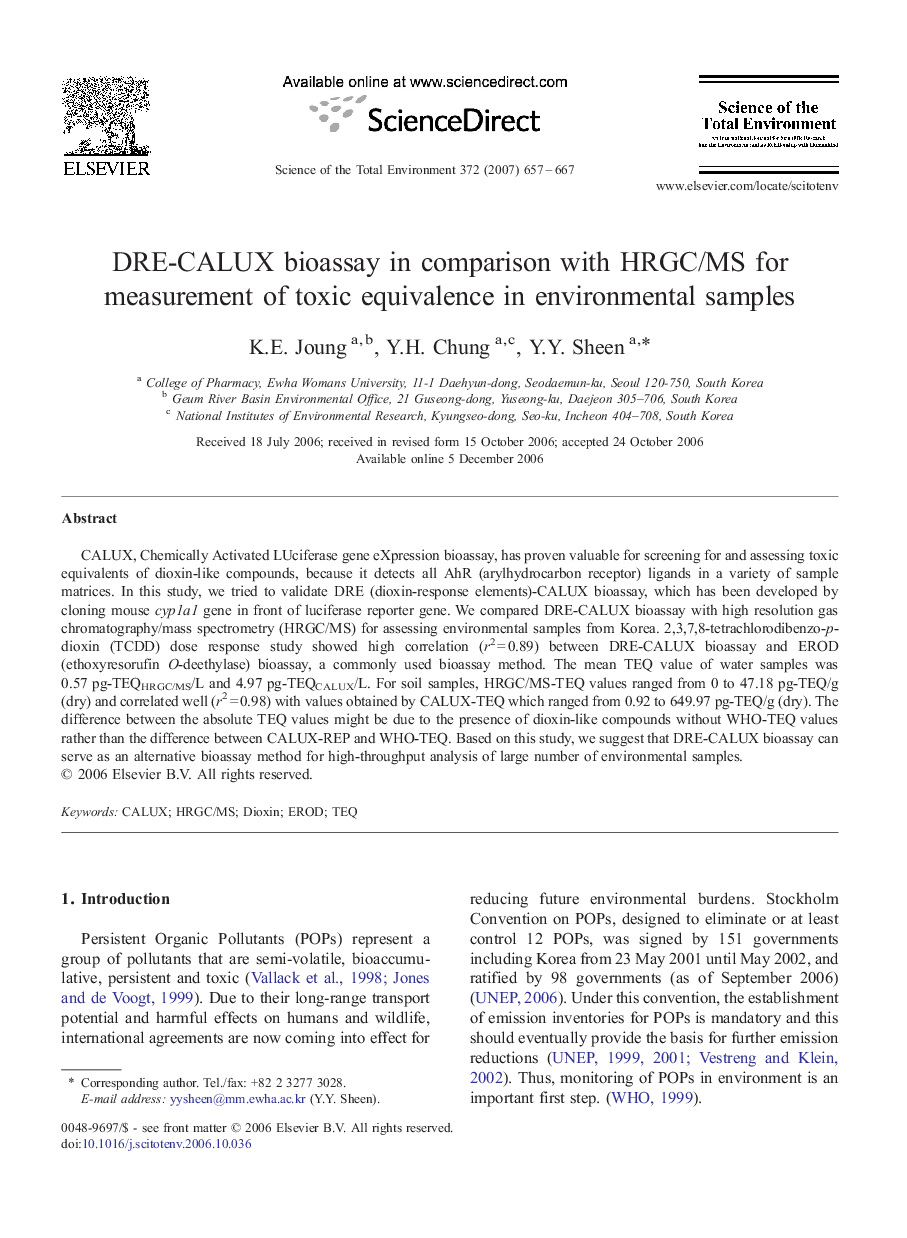| Article ID | Journal | Published Year | Pages | File Type |
|---|---|---|---|---|
| 4433580 | Science of The Total Environment | 2007 | 11 Pages |
CALUX, Chemically Activated LUciferase gene eXpression bioassay, has proven valuable for screening for and assessing toxic equivalents of dioxin-like compounds, because it detects all AhR (arylhydrocarbon receptor) ligands in a variety of sample matrices. In this study, we tried to validate DRE (dioxin-response elements)-CALUX bioassay, which has been developed by cloning mouse cyp1a1 gene in front of luciferase reporter gene. We compared DRE-CALUX bioassay with high resolution gas chromatography/mass spectrometry (HRGC/MS) for assessing environmental samples from Korea. 2,3,7,8-tetrachlorodibenzo-p-dioxin (TCDD) dose response study showed high correlation (r2 = 0.89) between DRE-CALUX bioassay and EROD (ethoxyresorufin O-deethylase) bioassay, a commonly used bioassay method. The mean TEQ value of water samples was 0.57 pg-TEQHRGC/MS/L and 4.97 pg-TEQCALUX/L. For soil samples, HRGC/MS-TEQ values ranged from 0 to 47.18 pg-TEQ/g (dry) and correlated well (r2 = 0.98) with values obtained by CALUX-TEQ which ranged from 0.92 to 649.97 pg-TEQ/g (dry). The difference between the absolute TEQ values might be due to the presence of dioxin-like compounds without WHO-TEQ values rather than the difference between CALUX-REP and WHO-TEQ. Based on this study, we suggest that DRE-CALUX bioassay can serve as an alternative bioassay method for high-throughput analysis of large number of environmental samples.
